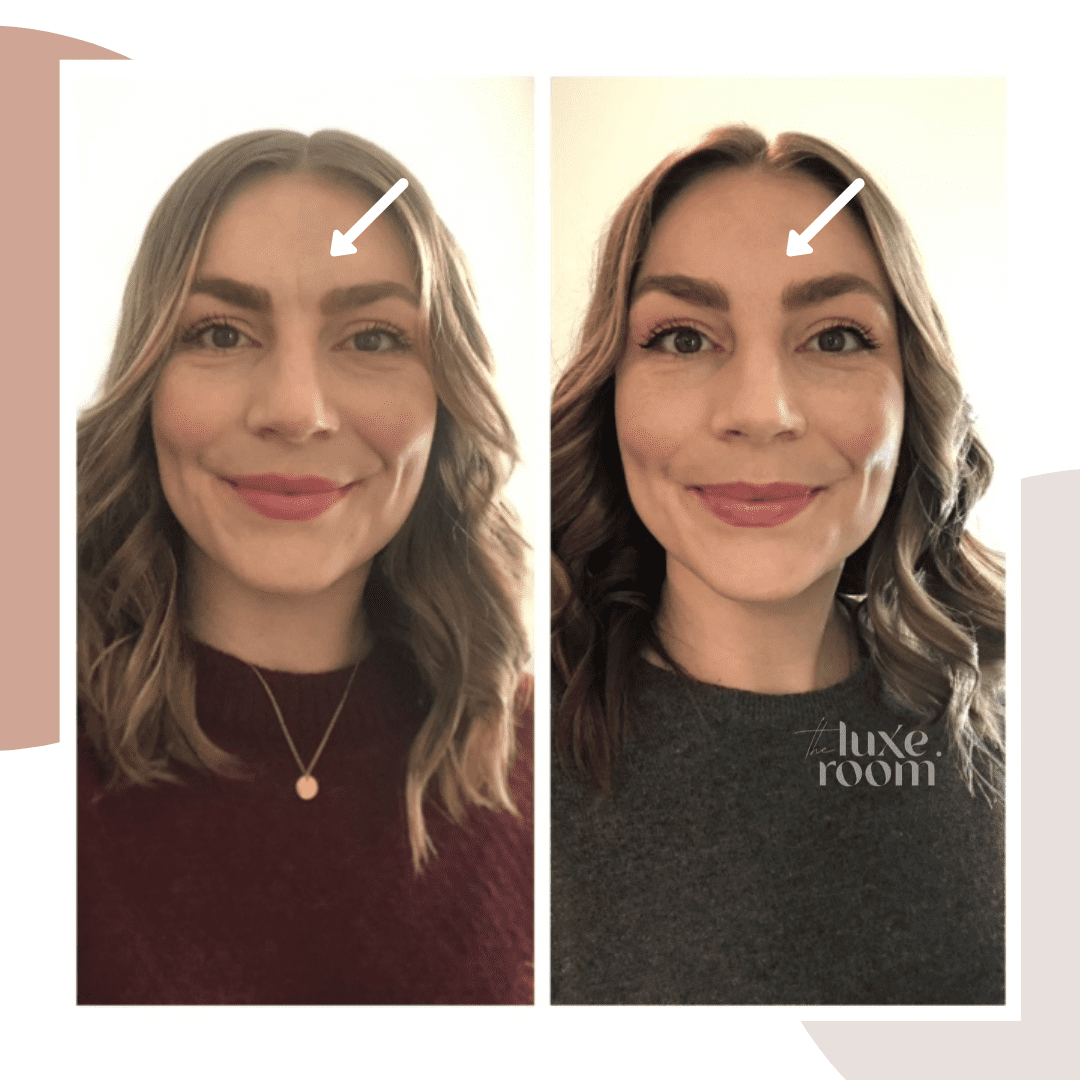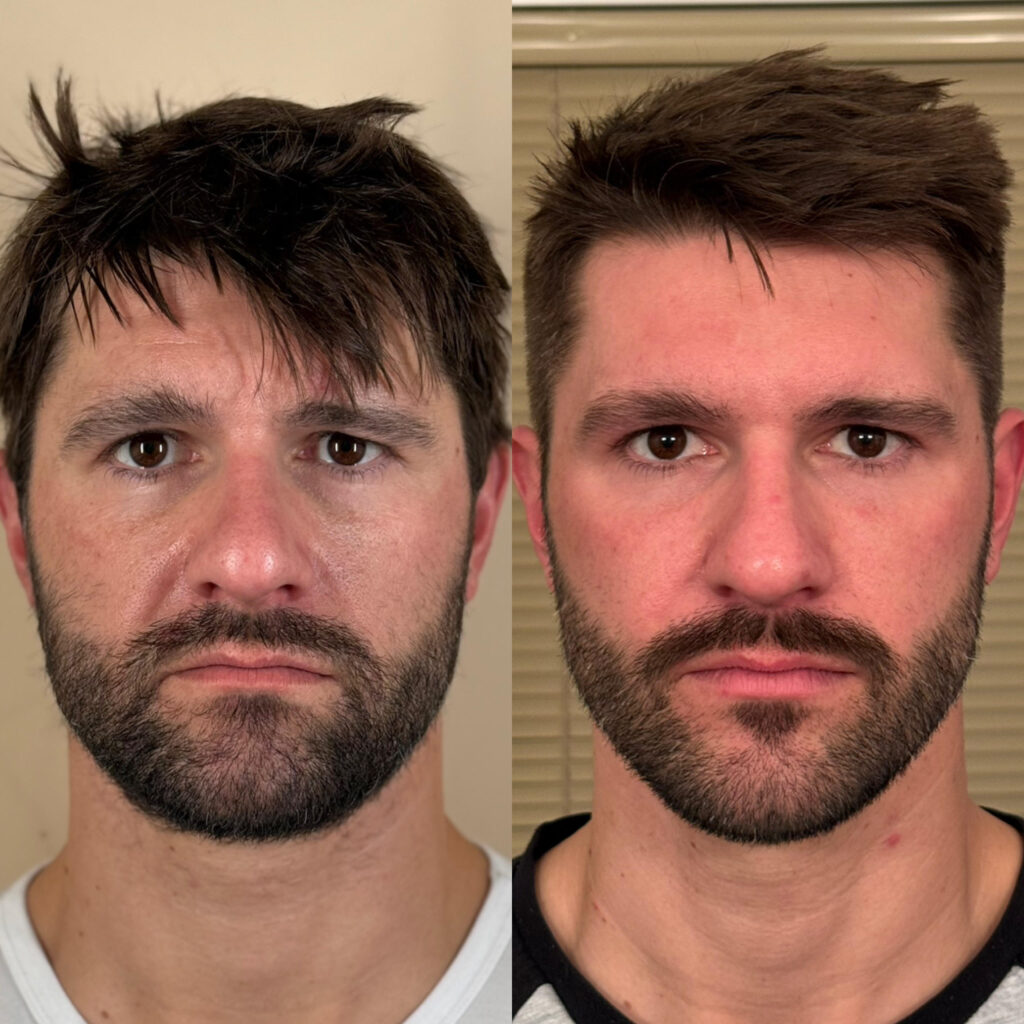Botox 101: What It Is, How It Works, and What to Expect
Botox is the cosmetic gold standard for a fresh and youthful look. With just a few precise injections, you can temporarily erase years of fine (and deep) lines off your face. Very few treatments deliver on their promises quite like Botox. It’s quick, effective, backed by science, and trusted by millions.
But how safe is it? How does it work? And what should you expect? We’re covering it all, plus debunking a few myths, so you walk into your first appointment with total confidence.

What is Botox and How Does it Work?
Botox’s main ingredient is Botulinum Toxin A, a purified neurotoxin derived from Clostridium botulinum. Botulinum Toxin A is one of the most potent toxins on the planet, and in extremely rare cases, botulinum poisoning can cause muscle weakness, fatigue, or even paralysis.
But while all of this may sound scary, you should know that in its refined form, Botox is precisely dosed, FDA-approved, and safe for long-term use. And best of all, it has been intensely studied for decades.
If you’re worried about injecting a toxin into your skin, don’t let that term fool you. Botox, as it’s used today, isn’t actually toxic to your cells. It doesn’t harm or destroy tissue at the injection site but rather causes a neurological reaction that relaxes muscles. Because of this, many experts now prefer the term neuromodulator as opposed to neurotoxin.
So how does it work? Botox blocks nerve signals that cause muscle contractions by binding to nerve endings and preventing the release of acetylcholine, a neurotransmitter essential for muscle movement. As the muscles weaken, wrinkles caused by expression soften.
Over the course of a few months, the nerve endings regenerate and sprout new connections, bypassing the blocked ones. This allows acetylcholine to be released again, and the effect of Botox gradually wears off.
What Areas Can Be Treated with Botox?
Botox wasn’t always the popular cosmetic treatment it is today. Its rejuvenating effects were discovered by accident in the 1980s when researchers were testing Botulinum Toxin A to treat muscle spasms. A patient being treated for blepharospasm (eyelid twitching) noticed her wrinkles disappearing, and the rest is history.
But crow’s feet aren’t the only thing that Botox can help smooth out. Here are the areas Botox can work its magic on:
Forehead Lines – Dynamic forehead lines that appear while you raise your eyebrows can develop into deep-set static lines that are permanently visible. Botox can smooth forehead lines and prevent them from getting deeper.
Frown Lines (a.k.a. The 11s) – Frown lines, also called worry lines, are caused by frowning and squinting and get worse with aging. The best way to eliminate them is to inhibit the natural frowning movement of the brows, and Botox can help do that.
Crow’s Feet – Lateral canthal lines, also sometimes referred to as laugh lines, develop on the external side of your eyes. A few units of Botox, strategically placed in the orbicularis muscle, can make them go away.
Bunny Lines – The tiny wrinkles that appear when you scrunch your nose? They’re cute when they’re temporary, but in time, they can become deep-set horizontal lines at the bridge of your nose. You can both prevent and treat them with Botox.
Jawline Slimming & TMJ Relief – If you have overactive jaw muscles, Botox will relax your masseters, which can make your jaw contour look slimmer and softer. Eliminating jaw clenching can be a lifesaver If you’ve been suffering from tension headaches and TMJ issues.
Gummy Smile – This is another one of those areas where Botox treatments can overlap with dental and orthopedic issues. Normally, a gummy smile is a very difficult thing to treat (and you often need surgery for it), but a drop of Botox will help relax an overactive lip so it doesn’t lift as much when you’re laughing.
Neck Lines – Platysmal bands are vertical lines where the edges of neck muscles become more obvious – the so-called turkey neck. Botox can help alleviate the contraction and restore a smooth appearance. Horizontal neck wrinkles (tech neck) aren’t necessarily caused by aging and can be treated with both filler and Botox.
Lines around the mouth – Smile lines that turn into deep creases around the mouth and fine lines above the upper lip (also called smokers lines) can all be treated with Botox to rejuvenate the mouth area.
Lip Flip – The lip flip is a popular Botox treatment that can be done on its own or in combination with lip filler. A few units into the orbicularis oris muscle will help the upper lip relax and subtly flip outward, giving the impression of a fuller lip. Perfect for balancing a thinner upper lip.
Non-Surgical Nose Job – Tweak your nose without going under the knife. Botox can lift the tip of the nose by relaxing the muscles that pull the nose down and reduce the flaring of the nostrils following the same principles.
Dimpled Chin – The pebbly, “orange peel” aspect of the chin is caused by an overactive mentalis muscle and tends to worsen with age. Injecting Botox into the mentalis muscle is an easy fix.
Does Botox Hurt?
Now that you have a few ideas of the areas you’d like to treat, it’s time to address the most obvious question: will it hurt?
The short answer is not really, but it depends on your pain tolerance and fear of needles. Most people describe the pain as a quick pinch or a tiny sting and some pressure. Most of the time, the fear is worse than the actual sensation.
But don’t let your emotions get the best of you – injectors use micro needles in their practice that are hairline thin, and you also have the option of applying a numbing agent. The numbing cream won’t eliminate all sensations, but it should minimize the pricking feeling when the needle goes in.
The session shouldn’t last longer than 15-20 minutes – it’s over before you know it, and there should be no lingering pain. If anything, you might feel a slight tightness or heaviness as it kicks in, but that’s totally normal.

How Long Does It Take To See Results?
Botox isn’t instant, but it works fast. Most people start noticing subtle changes within 3 to 5 days as their muscles gradually relax. However, the full effect takes about 10 to 14 days to fully settle in. So, if you’re getting Botox before a big event, you better plan ahead and factor in at least two weeks.
As Botox starts to settle in, you might notice that your expressions aren’t as strong in some areas, like your forehead or in between the brows – but give it time; it’s all part of the process. If some areas seem to be kicking in faster than others, don’t worry. If injected correctly, any minor asymmetry usually evens out by the two-week mark.
How Long Does Botox Last?
On average, Botox results stick around for three to four months. That’s how long it typically takes for nerve endings to regenerate and muscle function to return to normal. Some lucky patients report enjoying smooth skin for up to six months. Others metabolize the product faster, so Botox may not be the best option for them.
Since Botox effects are temporary, regular maintenance is key. You’ll need to factor in follow-up sessions every 3 to 4 months to stay on top of your results. With consistent treatments (and some practice), your muscles can become “trained” to move less, which can extend the time between touch-ups.
Can you make Botox last longer? Not really, but you can increase its chances to work. Botox takes a few months to get metabolized and out of your body, and while you can’t do anything to slow your metabolism down (and nor should you), you can ensure its longevity by being extra careful with the aftercare instructions. However, if you feel like Botox wears off too soon, you can look into more durable treatments like Daxxify that last 6 months on average, sometimes longer.
Can you make Botox wear off faster? Technically, it’s not possible. But doing things that stimulate blood flow – like massages of the area or intense workouts – could help you get rid of Botox sooner. Eventually, it will wear off, so you just have to be patient.
Are There Any Side Effects of Botox?
Botox is generally safe when administered correctly, but like any in-office procedure, it comes with some risks. The most frequent side effects you can expect are swelling, bruising, and redness at the injection sites – all mild and temporary and should resolve within 24 hours.
Possible but rare side effects of Botox can include dry mouth, mild pain at the injection site, fatigue, headaches, and neck discomfort. Some patients also report vision changes like blurred or double vision, drooping eyelids or eyebrows, and eyelid swelling or dryness. Choosing a skilled injector should greatly minimize these risks.
If you’re worried about long-term use, there’s no evidence that Botox causes permanent side effects or damage. Some people worry about muscle weakening over time – and there is some truth to it. However, muscle atrophy is something that happens to our bodies as we age, whether we use Botox or not. If you decide to stop Botox, your muscles will resume their function and get their strength back.
Can Botox Prevent Wrinkles From Forming?
Yes! Botox isn’t just about smoothing out existing wrinkles; it can actually stop them from forming in the first place. Dynamic lines can turn into deep-set static wrinkles after repeated muscle movement (think frowning, squinting, raising your eyebrows, laughing, etc).
Botox relaxes these muscles, preventing them from constantly folding the skin, which means fewer deep lines over time. That’s why more people in their 20s and 30s are getting Botox early to keep lines from setting in.
Can You Stop Botox At Any Time? Will Wrinkles Get Worse?
Yes, you can stop Botox whenever you want, and your wrinkles won’t get worse, but they will come back eventually. Your skin will return to its pretreatment state, and your face will regain its full expression. It may look to you like you have more wrinkles, but that’s just because you’ve gotten used to smooth skin.
If you’re not into Botox, you can still get a youthful glow with other solutions such as fillers, laser treatments, and chemical peels.
Will Botox Make Me Look Frozen or Unnatural?
Will Botox make you look frozen? Not if it’s done right. Back in the day, the goal was zero movements, totally smooth, shiny foreheads that screamed, I got work done. But that’s not what most people want anymore. It’s all in the dosage, and injectors are trained not to obliterate all lines and facial expressions.
However, keep in mind that there’s no way to reduce dynamic lines without reducing certain expressions to a degree. So, while you’ll still look like yourself most of the time, you won’t have the same capacity to lift eyebrows, frown, grimace, and perform other animated facial movements. You’ll be a more chill version of you, and that’s the trade-off we have to make.
Showing emotion is how we empathize with others, and Botox can make it a little harder for patients to show anger and disgust. But it also has its upsides – some studies show that not being able to frown as deeply can boost mood and even help with depression. They say laughter is the best medicine, but who knew not frowning had medical benefits too?
Who Is A Good Candidate?
While age doesn’t affect the way Botox works (and you can get Botox as early as 18 if you want to), most experts agree it’s best to start in your late 20s’, or early 30s’ if you want to prevent fine lines from deepening. However, starting Botox later in life can do wonders for your appearance, so don’t let the age factor stop you.
As long as you’re a healthy adult with realistic expectations and don’t mind the regular upkeep, Botox will work well for you.
That said, Botox is still a medical treatment, and if you have certain conditions in your medical history, it’s best to steer clear or find alternatives. Botox may not be for you if you have one of the following:
- Bleeding problems
- Muscle or nerve disorders
- Seizures
- Diabetes
- Heart disease
- Asthma or emphysema
- Recent eye surgery or glaucoma
- Allergies to any of the ingredients
If you’re pregnant, it’s best to avoid or pause neuromodulators and fillers just to be on the safe side. While generally considered safe, there’s simply not enough research to assess the risks vs. benefits of Botox during pregnancy.
How Much Does Botox Cost?
Let’s talk numbers. Botox isn’t one-size-fits-all; the cost depends on how many units you need and which areas you’re treating. At the time of writing this, The Luxe Room offers Botox at $14 per unit, with a 20-unit minimum.
Some areas, like forehead lines or crow’s feet, might need around 10-30 units, while treatments like jaw slimming with masseter Botox can require more. An average session can cost anywhere from $300 to $600 or more, depending on your goals. Want a subtle tweak? You’ll need fewer units. Looking for a more dramatic smoothing effect? A bit more.
The best way to know for sure? Book a FREE consultation. We’ll map out exactly what you need so there are no surprises.
Ready to Get Started?
Whether you’re nervously considering Botox for the first time or looking for a skilled injector who truly understands your goals, The Luxe Room is the place to be. We pride ourselves on delivering results that look effortless, natural, and 100% you.
We’d love to meet you! We offer complimentary consultations and follow-ups to ensure you love your results. Be sure to check out our before-and-after gallery for some real results and tons of beauty inspiration.
Sources:
- Carruthers, J., Carruthers, A., Humphrey, S., & Mooney, L. (2014). Botulinum Toxin Injection for Facial Wrinkles. American Family Physician, 90(3), 168-175. Retrieved from https://www.aafp.org/pubs/afp/issues/2014/0801/p168.html.
- Botulinum Toxin: Mechanism of Action and Clinical Use. Retrieved from https://www.openanesthesia.org/keywords/botulinum-toxin-mechanism-of-action-and-clinical-use/
- The Whole Truth About Botulinum Toxin – A Review. Retrieved from https://pmc.ncbi.nlm.nih.gov/articles/PMC7874868/
- Treatment of Depression with Botulinum Toxin. Retrieved from https://pmc.ncbi.nlm.nih.gov/articles/PMC9231293/



